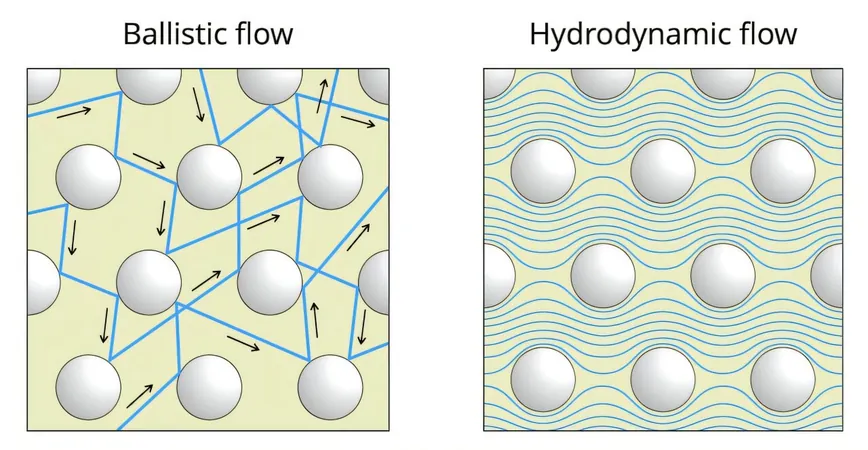
Unlocking the Secrets of Nanoscale Heat Flow: Two Theories Battle for Supremacy
2025-07-02
Author: Yu
In today’s tech-driven world, keeping our electronic devices cool is crucial not only for their functionality but also for their longevity. Overheating can lead to dramatic performance drops in everything from smartphones to electric vehicles, hindering the push for faster, more powerful gadgets.
When it comes to heat transport at the nanoscale, things get complicated. Traditional models fall short because heat behaves quite differently at microscopic levels, particularly in how vibrational energy travels through materials.
The Battle of Theories: Ballistic vs. Hydrodynamic Flow
Scientists have proposed two competing theories to explain this enigma: ballistic flow and hydrodynamic flow. Ballistic theory posits that heat - conveyed by particles called phonons - travels in a random fashion, akin to how light moves. In contrast, hydrodynamic theory views heat as a flowing fluid, with phonons moving in an organized, concerted manner.
A collaborative research team from the University of Colorado, Utah State University, and Carnegie Mellon University, including expert Albert Beardo from UAB's Physics Department, dove deep into these theories. Their study compared theoretical predictions with real-world experimental results.
A New Approach to Thermal Management
Their findings, recently published in the journal npj Computational Materials, suggest that a fusion of both theories might provide a clearer picture of nanoscale heat flow. "To foster the development of faster and more sustainable technologies, innovative thermal management approaches are essential," said Ismaila Dabo, a lead researcher from Carnegie Mellon.
Beardo emphasized the importance of simpler models that capture critical physical phenomena affecting thermal relaxation, as opposed to overly complex models that struggle with practicality. This shift could pave the way for significant advancements in the field.
Looking to the Future: A Call for Innovation
The research points toward future studies focused on integrating these models effectively. Simulations that explore the interaction between electrons and phonons could hold the key to unlocking even more accurate models.
Furthermore, there’s a pressing need for advanced experimental techniques that can precisely map heat flow in intricate three-dimensional structures, achieving both nanometer spatial and picosecond temporal resolution. This innovative approach could revolutionize our understanding and management of heat at the nanoscale.


 Brasil (PT)
Brasil (PT)
 Canada (EN)
Canada (EN)
 Chile (ES)
Chile (ES)
 Česko (CS)
Česko (CS)
 대한민국 (KO)
대한민국 (KO)
 España (ES)
España (ES)
 France (FR)
France (FR)
 Hong Kong (EN)
Hong Kong (EN)
 Italia (IT)
Italia (IT)
 日本 (JA)
日本 (JA)
 Magyarország (HU)
Magyarország (HU)
 Norge (NO)
Norge (NO)
 Polska (PL)
Polska (PL)
 Schweiz (DE)
Schweiz (DE)
 Singapore (EN)
Singapore (EN)
 Sverige (SV)
Sverige (SV)
 Suomi (FI)
Suomi (FI)
 Türkiye (TR)
Türkiye (TR)
 الإمارات العربية المتحدة (AR)
الإمارات العربية المتحدة (AR)